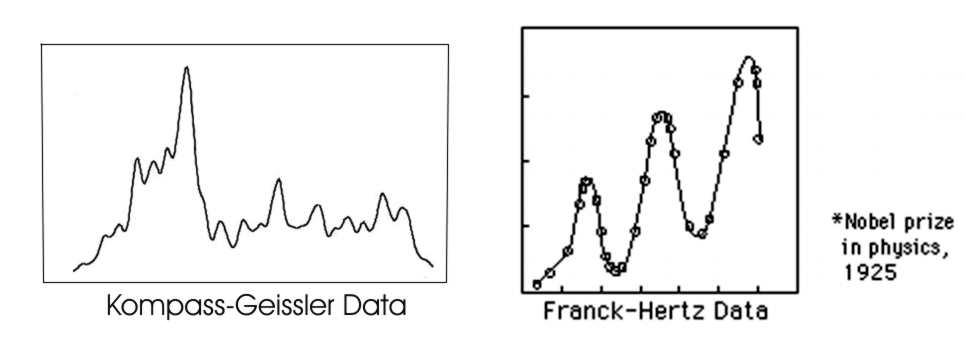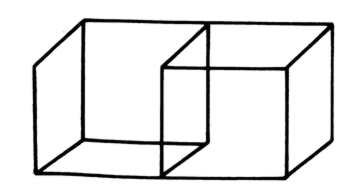
Flexible nature of natural concepts and their combinations
The main argument for applying the formal apparatus of quantum theory to the domain of cognition has to do with the flexibility, instability, and context-dependency of natural concepts that manifest themselves as fleeting contents of conscious experience. For example, in the domain of language, words are floating freely in a polyvalent state representing a variety of different uses. As the properties of small particles are not absolute and determined until observing them, the properties of word tokens are not determined until conscious apprehension. Similarly, impressions, ideas and opinions are conceptual entities with analogous properties and likewise invite an analysis in terms of quantum theory.
As suggested by the pioneers of quantum cognition (e.g. Gabora & Aerts 2002, Khrennikov 1999) the quantum formalism can be used to describe the flexible nature of concepts and their combinations in a very simple way in terms of interference effect
. This solves well-known puzzles of adjectival modification - such as what is the colour of a red apple (contrasting with the colour of a red flag or red bean (Blutner 2007). Further, it suggests a new approach to several puzzles of bounded rationality (Franco 2007).- Blutner (2007)
- Franco (2007)
- Gabora & Aerts (2002)
- Khrennikov (1999). Download here
Decision making
There are
paradoxical
violations of the sure thing principle (Savage 1954)which
have
resisted explanation by classical decision theory for over a decade.
Pothos & Busemeyer
(2009) demonstrate
that a quantum probability model using Schrödinger's equation provides an elegant of the puzzle.
It is convincingly
argued that quantum
probability provides an appropriate framework for
modelling human decision processes.
Starting in the eighties of the last century Geissler and his
collegues formulated a taxonomic model
of quantal timing which is based on the entrainment of temporal intervals. The
inspection of many different experimental findings suggested that all distinct times
are multiples of a small value of about 4.6 ms. A study of apparent motion of Gamma type
(Kompass & Geissler 2004) resulted in experimental distributions
that show close analogies to the famous Franck/Hertz experiment in
physics − demonstrating that electrons occuppy only discrete, quantized energy states.
Kompass &
Geissler (2001) From the
first-person-perspective, phenomenal states of consciousness are
multiple realized by neural activation states of the brain, thereby
inducing particular partitions of the neural state space. Likewise,
physiological measurements of neural activity through EEG/ERP, MEG, PET
or fMRI from the third-person-perspective provide a coarse-graining of
neural activation patterns that also leads to partitions of the neural
state space. In general, these induced partitions will be incompatible
to each other, supporting Velmans (2002).
Many particle systems in quantum physics are described by Fock space
states, which are direct sums of tensor product states of arbitrary
rank.
Such states
can represent cognitive data structures such as lists, trees, or frames.
A natural way to realize cognitive Fock space representations by neural
networks is provided by function spaces in dynamic field theory
(Thelen
et al. 2001). Appropriately chosen function systems such as spherical
harmonics exhibit recursion properties (through Clebsch-Gordan
coefficients) that allow for infinite combinatorial productivity as
required for neural realizations of cognitive architectures. Quantum Cognition suggests a new and principled way to formalize
the distinction between semantic ambiguity and semantic nonspecificity
in terms of mixture and superposition, respectively, as first proposed by Jay Atlas
(2005). Psychologists have described multistable figures
such as the ambiguous maiden/hag drawing and the famous Necker cube. As
Atlas points out, there is an important difference between these
two examples: the former counts as real ambiguity, but the latter as nonspecificity. An ambiguous figure (or sentence) does not spontaneously
perform semantic flips but a nonspecific one does. Moreover, only in
cases of nonspecificity one finds the free combination of readings such
as the 4 readings of Atlas’ double Necker cube.
Empirical verification
of Atlas' view has been provided by Philipp Koralus (2005).
The Necker cube is a paradigmatic example for
bistable perception where
pattern reversal obeys a particular probability distribution. Atmanspacher, Filk and Römer (2004) discussed this switching dynamics in
terms of the quantum Zeno effect where “observation” (here attending to
a percept) increases the dwell-time of an otherwise fast decaying
unobserved state.
Mental timing
First
vs third person accounts
Fock space
representations of cognitive processes
Bistable perception
Opinion forming and personality psychology
Aerts et al. (2008) have applied a quantum analysis to a cognitive setting where individuals’ opinions were probed. Three different questions for the opinion poll were considered:
Q1 : Are you in
favour of the use of nuclear energy?
Q2 : Do you think it would be a good idea to legalize soft-drugs?
Q3 : Do you think capitalism is better than social-democracy?
Interestingly, in such situations, most people don’t have a predetermined opinion. Instead, the opinion is formed to a large extent during the process of questioning in a context-dependent way. Personality tests can be seen as a
related cognitive setting where individual opinions are probed
- Aerts et al. (2008)
- Blutner & Hochnadel (2009)
Further applications
They concern the geometry of information retrieval (Widdows 2003; Van Rijsbergen 2004), the semantics of inquisitives (Blutner 2009), Hilbert space semantics and nonmonotonic logic (Engesser & Gabbay 2002)
- Blutner (2009)
- Engesser & Gabbay (2002)
- Van Rijsbergen (2004)
- Widdows (2004)

